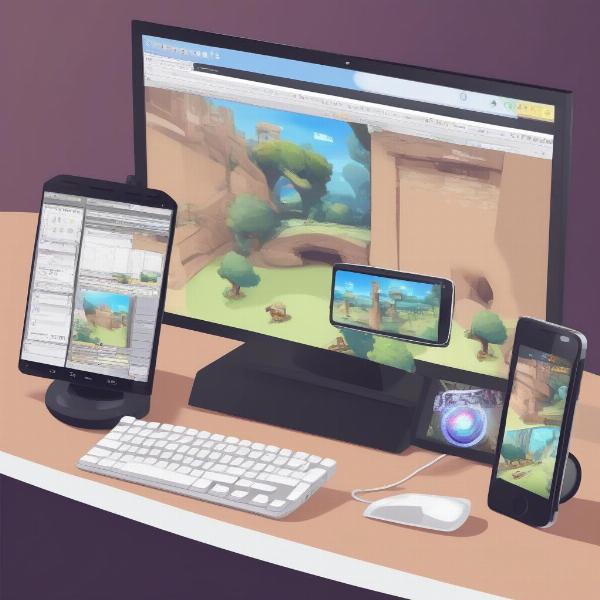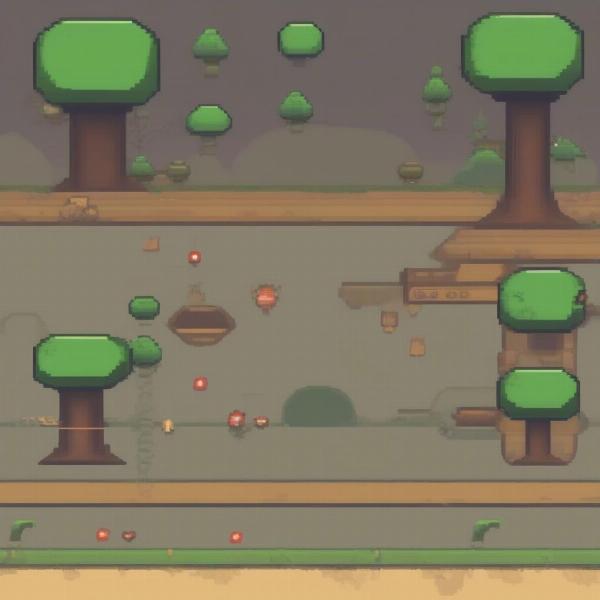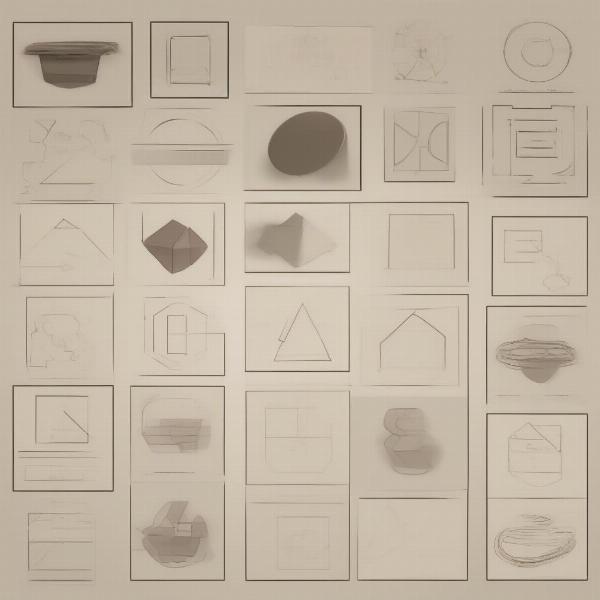Welcome to supremeduelist.blog, where we delve into the exciting world of game development. For aspiring Java game developers, choosing the right libraries can be crucial for success. We’ll explore the best libraries for creating captivating 2D games using Java, covering essential aspects, features and why they stand out from the crowd.
This article aims to equip you with a comprehensive guide to selecting the most appropriate libraries for your 2D Java game development projects. We’ll examine the features, ease of use, and performance of each library. By the end of this article, you should have a clear understanding of which Java 2D game library suits your specific needs and project requirements.
Why Choose Java for 2D Game Development?
Java, despite being around for a while, remains a solid choice for game development, especially for 2D titles. Its “write once, run anywhere” philosophy, thanks to the Java Virtual Machine (JVM), allows developers to easily deploy their games across multiple platforms, from Windows and macOS to Linux. Java boasts a robust ecosystem and a wealth of resources, and provides cross-platform compatibility, making it a versatile option. Furthermore, Java’s strong object-oriented programming (OOP) paradigm is well-suited for designing complex game structures.
Beyond its fundamental advantages, Java enjoys widespread community support. This is important because a strong community means more learning resources, tutorials, and readily available solutions to common problems. In short, if you’re looking for a reliable, cross-platform language with strong community backing for 2D game creation, Java is definitely worth considering.
Top Java Libraries for 2D Game Development
Let’s dive into some of the best libraries that specifically cater to 2D game development in Java. We will explore several libraries, each offering distinct strengths and suitability for different project types. These include, but are not limited to, LibGDX, Slick2D, and Java2D.
LibGDX: A Comprehensive Framework
LibGDX is a highly versatile and powerful cross-platform framework ideal for both beginners and experienced game developers. It provides a rich set of APIs covering graphics, audio, input, and networking. One of the key advantages of LibGDX is its ability to deploy games to various platforms, including desktop, Android, iOS, and web browsers, without needing significant code changes. This “write once, deploy anywhere” feature is particularly valuable for developers seeking to reach a wide audience.
LibGDX offers features that greatly ease game development:
- Cross-Platform Development: Deploy to multiple platforms with minimal code modifications.
- Rendering Capabilities: Supports OpenGL, providing advanced graphics capabilities.
- Input Handling: Easy handling of mouse, keyboard, and touch inputs.
- Audio Support: Supports a range of audio formats, and provides a flexible sound management system.
- Physics Engine: Integration with physics libraries such as Box2D and Bullet.
- UI Toolkit: Provides necessary components for building user interfaces.
 LibGDX game development framework overview
LibGDX game development framework overview
Furthermore, LibGDX has an active and robust community, which is great for those looking to learn or need some development guidance. It offers a well-documented API and an abundance of tutorials.
“LibGDX stands out for its robust performance and cross-platform capabilities, making it an excellent choice for developers who need versatility,” notes Dr. Anya Sharma, a Computer Science Professor at the National Institute of Technology, specializing in game development.
Slick2D: A Beginner-Friendly Option
Slick2D is often recommended for newcomers to game development due to its simplicity and ease of use. Built on top of LWJGL (Lightweight Java Game Library), Slick2D provides a more high-level approach to 2D game development. It simplifies complex tasks, allowing beginners to quickly grasp fundamental concepts and create games without getting bogged down in too much detail. It’s also an open-source project, which means you can benefit from community driven improvements and expansions.
Key features of Slick2D include:
- Ease of Use: Simple API and clear documentation, making it easy to learn.
- Graphics Handling: Supports basic rendering, including sprites and animations.
- Input Management: Simplified handling of keyboard, mouse, and gamepad inputs.
- Audio Integration: Supports sound effects and music with relative simplicity.
- Resource Loading: Makes it straightforward to load images, sounds, and other resources.
- Lightweight: Uses less overhead compared to other larger frameworks.
 Slick2D Java game library in action
Slick2D Java game library in action
Slick2D might not be as feature-rich as LibGDX, but it’s perfect for learning game development or creating simple, less complex 2D games. Its user-friendly nature makes it a great starting point.
Java2D: The Core API
Java2D, part of the standard Java API, is a core library that provides basic functionalities for 2D graphics. While it’s not strictly a game development framework, it serves as a foundation for many other Java-based game libraries. It gives you control over drawing shapes, images, text, and other 2D graphics. Because it’s built into the Java Development Kit (JDK), there’s no need to download and configure additional libraries.
Key aspects of Java2D include:
- Core Java Functionality: Directly integrated with the Java SDK.
- Basic Graphics: Supports drawing shapes, images, and text.
- Transforms: Enables transformations like scaling, rotation, and translation.
- Image Manipulation: Provides tools for image filtering and processing.
- Font Handling: Allows use of various fonts with different styles.
- Accessibility: Easy integration with standard Java development environments.
 Java 2D API Drawing Capabilities
Java 2D API Drawing Capabilities
While Java2D can be used to create basic 2D games, it requires more effort to build sophisticated game mechanics and graphics compared to frameworks like LibGDX and Slick2D. It’s often used in combination with other libraries for more advanced features.
Other Notable Libraries and Tools
In addition to the above, other libraries and tools can be handy when working with Java for 2D game development:
- LWJGL: The Lightweight Java Game Library provides low-level access to OpenGL, OpenAL, and other native APIs.
- JBox2D: A Java port of the popular Box2D physics engine.
- Tiled: A flexible tile map editor that can be used with various game development libraries.
- AWT and Swing: While primarily used for creating GUIs, these can be used for game development if you are very familiar with the APIs.
Understanding that a wide variety of tools and libraries exist can help you build the optimal development environment for your specific needs.
Which Library Is Right for You?
The selection of the right library is important and depends heavily on the game project requirements, the developer’s experience level, and desired outcome.
If you’re starting out and learning, Slick2D is a great option due to its simplicity and ease of learning. If you are working on a more complex project or want broad cross-platform support then LibGDX is recommended. Java2D can be useful for its foundational graphic capabilities or those who prefer more low level control and is often combined with other tools.
It’s essential to try different libraries to see which best fits your workflow and the kind of games you want to develop.
Frequently Asked Questions (FAQs)
What is the easiest Java library for 2D game development?
Slick2D is often considered the easiest library for beginners due to its straightforward API and simple syntax. Its focus on fundamental concepts allows new developers to get started quickly.
Can I make a professional game with Java?
Absolutely. Many high-quality 2D games are created with Java, especially using robust frameworks like LibGDX. Java’s capabilities are well-suited for both small and large-scale projects.
Do I need to know OpenGL to use LibGDX?
No, while LibGDX does use OpenGL for rendering, it abstracts away the complexities, so you don’t need to know OpenGL to use it effectively.
Is Java a good language for game development?
Yes, Java is an excellent option, particularly for 2D games because of its cross-platform capabilities and robust ecosystem. It is ideal for game developers seeking to deploy to multiple platforms.
Are there free tutorials for Java game development libraries?
Yes, there are tons of free tutorials, documentation, and community support forums readily available online for most Java game libraries. It’s just a matter of searching and finding them.
How do I choose the right library for my game?
Start with understanding the game complexity and your desired target platforms. If you want to deploy broadly on mobile devices, then LibGDX is a good option, but for a beginner, Slick2D can be a better starting point.
Conclusion
Choosing the best libraries for 2D game development in Java will come down to carefully analyzing the available tools, considering their pros and cons, and matching them with the desired outcome for your project. Frameworks like LibGDX offer versatility and cross-platform support, while Slick2D shines in its simplicity, and Java2D provides a solid foundation.
Remember to explore different options, and pick one that best suits your project goals and expertise. Stay tuned to supremeduelist.blog for more game development insights, tutorials, and reviews. We are here to guide you on your game development journey!
Ready to start your game development adventure? Start by exploring these libraries and begin creating the 2D game you’ve always dreamed of.
Leave a Reply